You will need:
- Food colouring (the little squeeze bottles are very handy here)
- A tall glass or vase filled with water
- Vegetable oil
- Somewhere where you run the experiment without worrying about oil spills
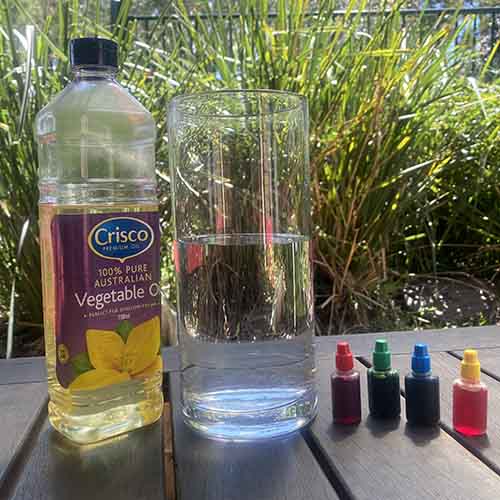
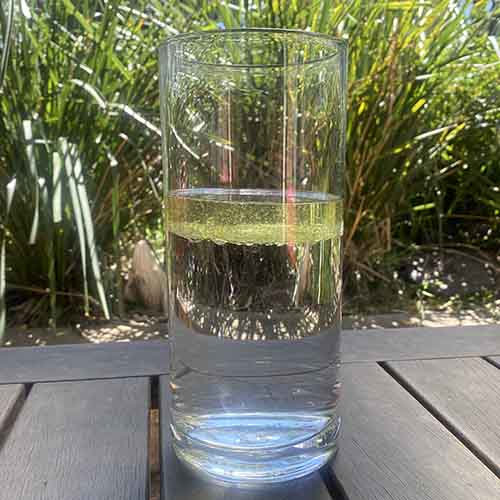
You should find that the oil floats above the water in the glass.
Oil does not mix with water because oil is hydrophobic. This is because water , H2O, is made of 1 oxygen atom which carries two negative charges and the two hydrogen atoms each carry a positive charge. This causes water molecules to be polar in charge, which means that the charge across each molecule is uneven. Oils on the other hand are non-polar, which means their charges are spread evenly across the oil molecule and as such are repelled by the polar water molecules.
Also, the oil floats above the water because it is less dense than water (ie. less mass per volume). Try this density column science activity to look even further at floating liquids!
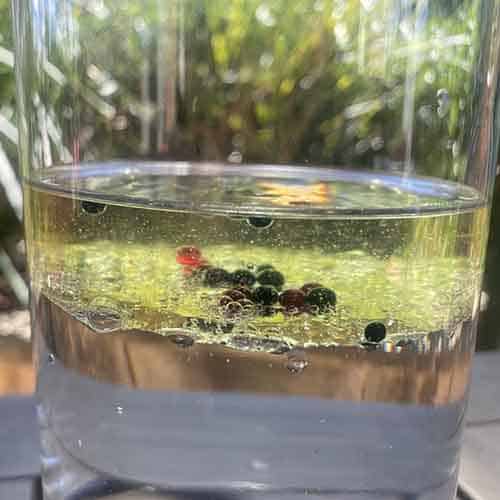
Firstly, the food colour beads drop through the oil as they are denser than the oil.
You should find that the food colour droplets form bead shapes at the boundary between the oil and water layers.
The bead shapes form as the water-based food colouring is repelled by the oil and this repulsion from the oil plus the surface tension in the food colouring around each droplet pulls them into a sphere shape.
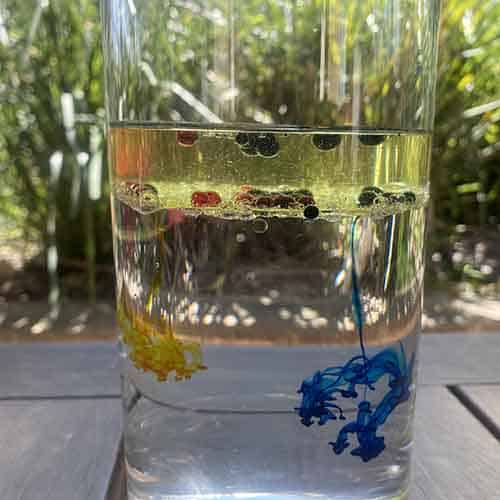
Once the food colouring droplets break the surface tension of the water layer, they stream downwards towards the bottom of the glass. This is because food colouring is denser than water.
You will notice that the food colouring spreads out as it drops through the water. This is because the food colouring is water-based and so is able to mix in water. The food colouring will continue to spread out in the glass as the food colour moves from high concentration to low concentration.
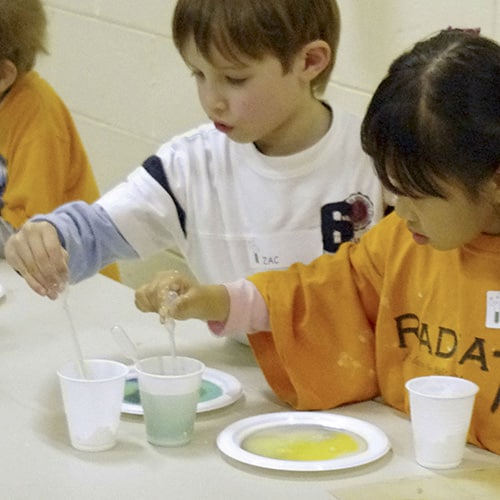
School science visits since 2004!
– Curriculum-linked & award-winning incursions.
– Over 40 primary & high school programs to choose from.
– Designed by experienced educators.
– Over 2 million students reached.
– Face to face incursions & online programs available.
– Early learning centre visits too!
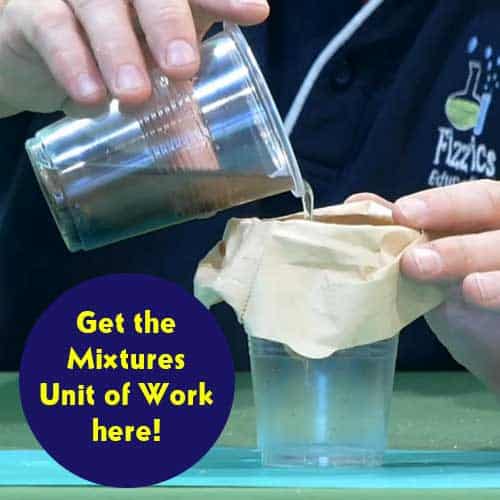
Get the Unit of Work on Mixtures here!
- How can we separate mixtures?
- What are the different techniques?
- From chromatography to magnetism, join us to explore the variety of ways we can separate mixtures!
Includes cross-curricular teaching ideas, student quizzes, a sample marking rubric, scope & sequences & more
Variables to test
- Try different oil above the water – do the food colour droplets fall through each oil at the same speed?
- What happens if you add salt or sugar to the water first?
- What happens if you change the temperature of the oil, water or food colouring?
Marvellous Mixtures
Years K to 4
Maximum 30 students
Hands-on science workshop
60 or 90 minutes
Online Class Available
Chemistry Show
Years 3 to 6
Maximum 60 students
Science Show (NSW & VIC)
60 minutes
Online Class Available
Working with Water
Years K to 2
Maximum 30 students
School workshop (NSW & VIC)
60 or 90 minutes
Online Class Available

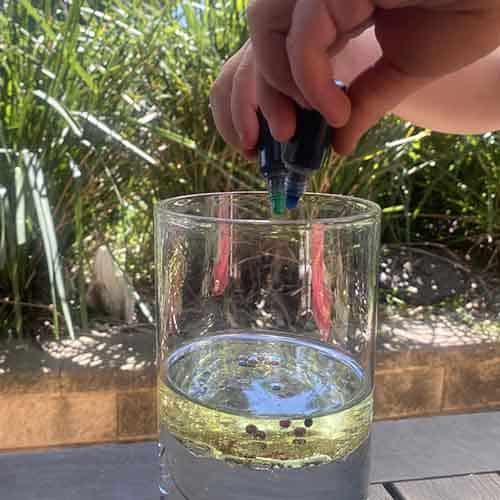
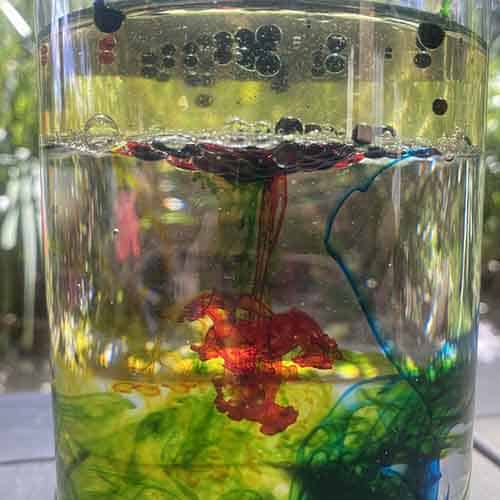



























I love how the fireworks in the glass stood out and l learnt that the charges make a positive charge so the veggie oil and water don’t mix!
I added little bit to much oil and It took longer to go though
Yes! This will happen for sure. Try different types of oils, which types of oils let the food colouring drops fall down faster? Let us know!
It would have to take a long time
Not too long 🙂